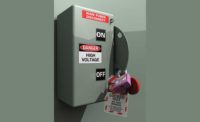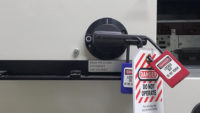History
The Control of Hazardous Energy (Lockout/Tagout), 29 CFR 1910.147, standard was promulgated on September 1, 1989, at Federal Register, Volume 54, No. 169 (pages 36644-36690), and was effective January 2, 1990, as announced at Federal Register, Volume 54, No. 213, November 6, 1989 (page 46610).
Key compliance requirements
Some of the most critical requirements:
- Develop, implement, and enforce an energy control program.
- Use lockout devices for equipment that can be locked out. Tagout devices may be used in lieu of lockout devices only if the tagout program provides employee protection equivalent to that provided through a lockout program.
- Ensure that new or overhauled equipment is capable of being locked out.
- Develop, implement, and enforce an effective tagout program if machines or equipment are not capable of being locked out.
- Develop, document, implement, and enforce energy control procedures. [See the note to29 CFR 1910.147(c)(4)(i) for an exception to the documentation requirements.]
- Use only lockout/tagout devices authorized for the particular equipment or machinery and ensure that they are durable, standardized, and substantial.
- Ensure that lockout/tagout devices identify the individual users.
- Establish a policy that permits only the employee who applied a lockout/tagout device to remove it. [See 29 CFR1910.147(e)(3) for exception.]
- Inspect energy control procedures at least annually.
- Provide effective training as mandated for all employees covered by the standard.
Enforcement statistics
October 2016 through September 2017 – totals for all industries
Citations: 2,796
Inspections: 1,617
Penalty: $14,954,818
#5 on OSHA’s Top 10 Most Frequently Cited Standards
Most frequently cited provisions
- The employer shall establish a program consisting of energy control procedures, employee training and periodic inspection.
- Procedures shall be developed, documented and utilized for the control of potentially hazardous energy.
- Locks, tags, chains, wedges, key blocks, adapter pins, self-locking fasteners, or other hardware shall be provided...for isolating, securing or blocking of machines or equipment.



